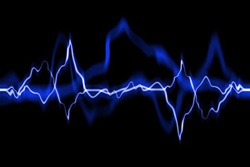What Does Broadcast Wave Format Mean?
 You are probably familiar with WAV files. They are pretty much the default audio file for computers. They are uncompressed, non-lossy audio files, which means that they are typically large in size – mainly because WAVs are high-quality files. This is in contrast to MP3 and other audio file types you see on the internet, which have had audio information removed and compressed and otherwise mangled to make the file size small enough to work on the internet. Technically MP3s are not as as good as WAV files for audio quality.
You are probably familiar with WAV files. They are pretty much the default audio file for computers. They are uncompressed, non-lossy audio files, which means that they are typically large in size – mainly because WAVs are high-quality files. This is in contrast to MP3 and other audio file types you see on the internet, which have had audio information removed and compressed and otherwise mangled to make the file size small enough to work on the internet. Technically MP3s are not as as good as WAV files for audio quality.
But besides being so darned convenient (not to mention the basis for on-line music), MP3s are also useful in another way. You’ve probably noticed that these files show all kinds of information (like song name, artist name, etc.) when you load them up in iTunes, on your ipod, or even in the properties field in Windows Explorer. That’s pretty handy isn’t it? Standard WAV files don’t usually have this information available.
But there is an enhanced kind of WAV file out there called the Brodcast WAV Format (BWF) that allows users to add that kind information. Reaper audio software (which I am always talking about because it is so awesome – see our post here – www.homebrewaudio.com/reaper-tutorial-video/) uses BWF as it’s default format. You can edit the info in Reaper or in several other programs as well (Adobe Audition comes to mind). BWFs contain really useful information specifically to aid in sharing the file between computers, projects, and audio engineers – information like what the start time for the file is in context to a multi-track recording project, how the file was encoded (bit depth, sampling frequency, etc.), project name, etc.
Here is a good article with more detail on BWF: https://www.audiorecording.me/what-is-broadcast-wave-format-bwf-how-to-use-it-in-your-daw.html
